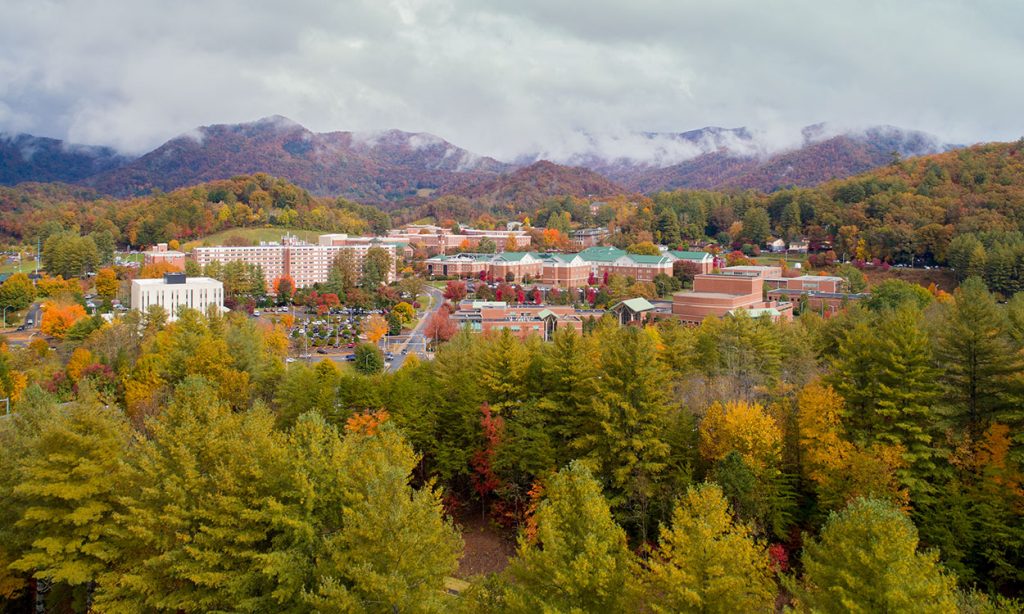Campus biologist: Near normal weather should produce vibrant autumn display
If the current long-range weather forecast of close-to-normal weather conditions pans out, the mountains of Western North Carolina should produce a typically bright display of fall leaf color this year – enough to satisfy both the region’s residents and the thousands of visitors who travel in for nature’s annual show.
That’s the word from Beverly Collins, Western Carolina University’s autumnal analyzer and fall color calculator. A professor of biology at WCU, Collins combines her knowledge of forest ecology with observations of weather trends to assess the potential for a strong leaf color season.

Beverly Collins
“After having unusually warm and wet conditions in the mountains from spring through mid-summer, precipitation returned closer to normal in late July,” Collins said. “The long-term forecast that extends through October is for average precipitation and warmer-than-normal temperatures. This forecast is closer to our historical weather, although a bit warmer than past years, and if the forecast holds, we should have our typical bright colors this year.”
Leaf fanatics want to know when the color will be at its peak. Chief among the factors that affect that timing is the declining daylight of fall, when sunrise comes later and sunset happens earlier as the angle of the sun sinks toward the south, Collins said. In the WNC mountains, some color can begin to appear in early September as that lessening light cues the appearance of color in species such as sumac and sourwood, she said.
Weather conditions also contribute to the timing of the color outbreak, with cooler nights resulting in less chlorophyll (or green) production in the leaves. So, if the long-term forecast holds and those cooler nights are delayed, peak color might hold off until the last weekend of October near WCU and many of the valley towns in the region that are about 2,000 feet in elevation, Collins said.

The WCU campus is surrounded by color on a rainy autumn day.
Speaking of elevation, that factor contributes to the variety of leaf color in two ways. Trees change color earlier at the typically cooler higher elevations and later at the warmer lower elevations, and the various species found at WNC’s wide-ranging elevations (2,000 feet to more than 6,000 feet) operate on different schedules, she said.
“In looking at the typical Southern Appalachian vista, the highest elevations that have fir and spruce trees stay dark green all year. Moving down in elevation, maple, cherry and birch trees of the northern hardwood forests often turn early, with predominately reds and yellows,” Collins said. “The mixed oak-hardwood forests often turn over a more prolonged time, with the reds, oranges and yellows of maples, birches and tulip poplar appearing earlier and the more muted yellows and reds of oaks appearing later. Sycamores, maples, walnut and birches along streams tend to turn yellow, then brown, and the leaves fall early.”
A wildcard in nature’s leaf color mix is the rogue hurricane remnants or big storms that could bring heavy rain and strong winds to the mountains and knock the leaves off the trees ahead of schedule, she said. Leaf color aficionados should cross their fingers and hope that doesn’t happen.
“Overall, the high species diversity and the varied topography of Western North Carolina usually combine to produce a pleasing variety of leaf color for anyone lucky enough to be traveling through the mountains from October into early November,” Collins said.

